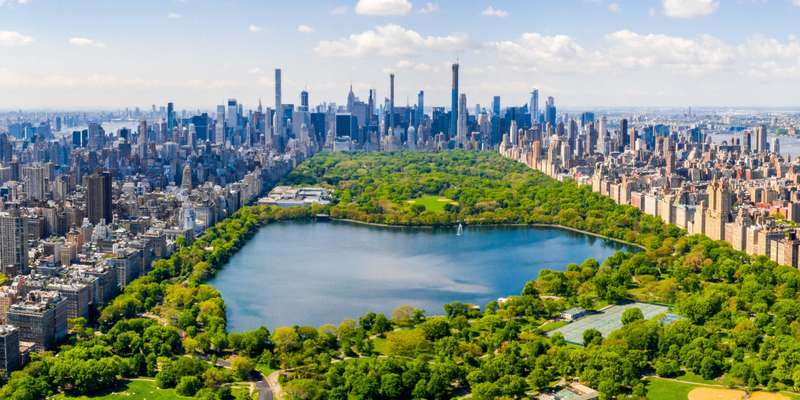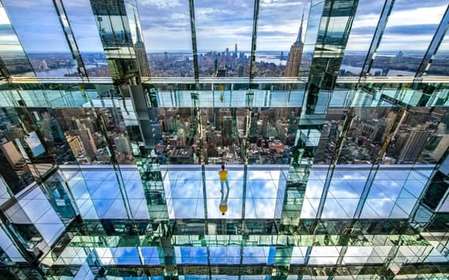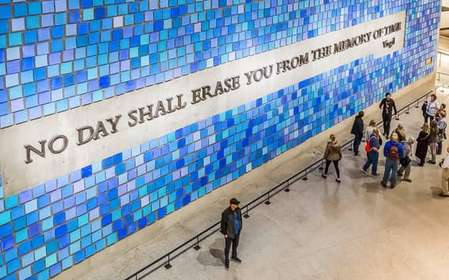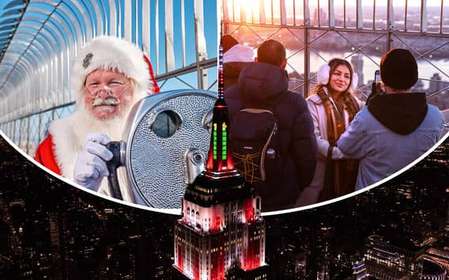- Home
- Useful Tips
- Best ways to experience New...
New York's waterfront parks offer breathtaking skyline views and serene escapes from urban chaos, yet most visitors miss their full potential. Over 60% of travelers cluster at overcrowded piers like Brooklyn Bridge Park's main entrances, unaware of quieter sections with superior vistas just blocks away. The frustration of navigating packed pathways or missing golden hour at prime photo locations turns what should be rejuvenating experiences into stressful scrambles. Locals know the secrets to accessing these green oases – when to arrive for uninterrupted Hudson River sunsets, where to find hidden benches with Statue Liberty sightlines, and how to combine multiple parks into one seamless waterfront stroll. These 520 acres of riverside greenery demand strategic planning to transform from crowded tourist checkpoints into personalized urban retreats.


Escaping the crowds at popular piers
The southern end of Brooklyn Bridge Park near Pier 6 consistently draws thick crowds, while equally stunning northern sections like Empire Fulton Lawn remain surprisingly quiet. Arriving before 9am lets you claim prime Manhattan-view hammocks before weekend brunch crowds descend. For sunset seekers, the often-overlooked Gantry Plaza State Park in Long Island City provides front-row East River seats with the entire Midtown skyline as your backdrop – plus far fewer photographers jostling for space. Smart visitors follow the shade patterns too; the west side of Hudson River Park stays cooler during summer afternoons when other areas become uncomfortably sunny. These subtle positioning strategies make all the difference between fighting for breathing room and having waterfront vistas all to yourself.
Curating your perfect waterfront route
Stringing together multiple parks creates a dynamic waterfront experience most tourists never attempt. Start with sunrise at the Battery's hidden gardens near Castle Clinton, then take the free Staten Island Ferry for unbeatable harbor views before looping back through Wagner Park's tranquil lawns. The truly ambitious can walk the entire 4.5-mile Hudson River Greenway from 59th Street down to Battery Park, stopping at Pier 25's mini-golf course or Pier 57's elevated park for breaks. Local runners swear by the early morning light along the Roosevelt Island promenade, accessible via tram for a unique perspective. These interconnected routes reveal New York's true relationship with its waterways – something you'll never grasp from isolated park visits.
Hidden waterfront picnic spots with million-dollar views
Forget fighting for bench space with your takeout – the secret to perfect waterfront dining lies in unexpected grassy knolls and converted industrial spaces. The northernmost tip of Riverside Park near 125th Street offers Harlem River panoramas from shaded tables almost no tourists visit. Governors Island's Hammock Grove provides picnic-ready lawns with Lady Liberty views, accessible via a thrilling (and affordable) ferry ride. Even well-known parks conceal perfect meal locations; the elevated gardens above Pier 57's food hall offer indoor/outdoor flexibility when weather turns. Locals bring foldable chairs to Domino Park's less-crowded southern end, where the remains of sugar factories create unique industrial backdrops for sunset happy hours.
Capturing professional-grade skyline photos without the hassle
Waterfront parks contain dozens of camera-ready angles most visitors walk right past. The trick lies in positioning – the tiny peninsula at Brooklyn Bridge Park's Pier 5 creates perfect symmetry shots when you frame Manhattan between its railings. Hunters Point South Park's curved walkways allow for creative long exposures of the UN Building reflected in the East River. For hassle-free golden hour shots, the concrete bleachers at Gantry Plaza align perfectly with the Chrysler Building's art deco spire. Savvy photographers arrive 90 minutes before sunset to scout these less obvious vantage points, avoiding the predictable compositions everyone shares on social media. Bring a lightweight tripod that won't obstruct pathways, and remember that some of the most striking images come from turning your back on obvious landmarks to capture the play of light on water.



